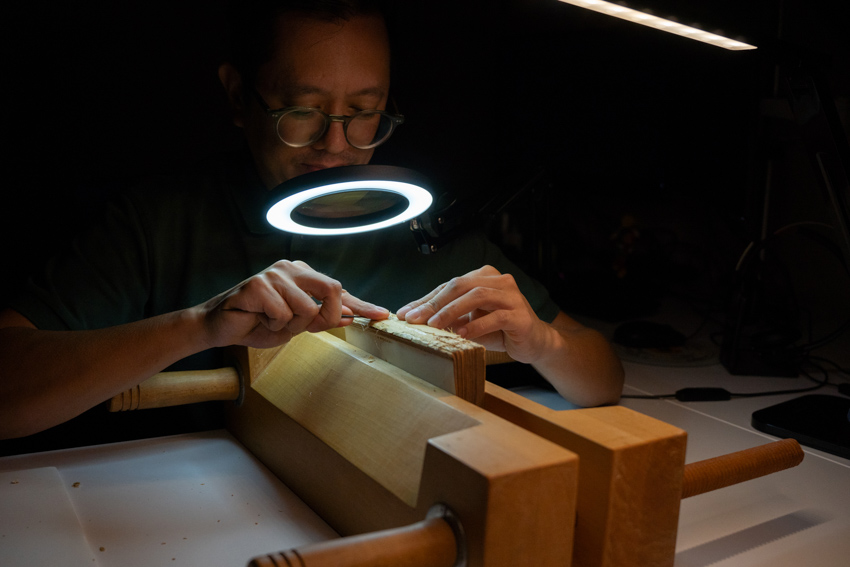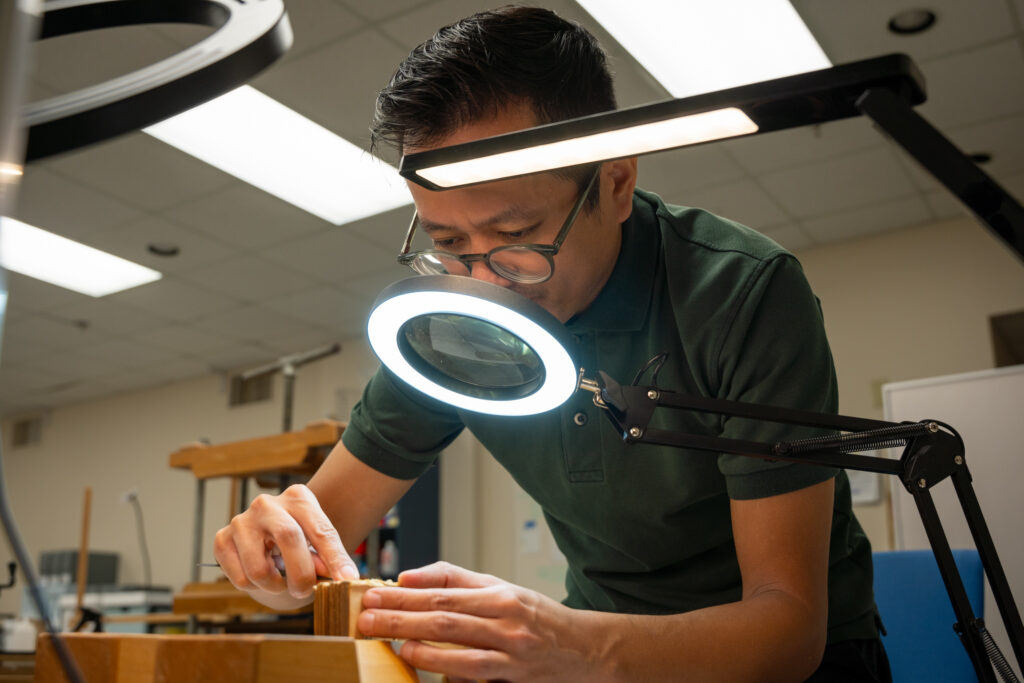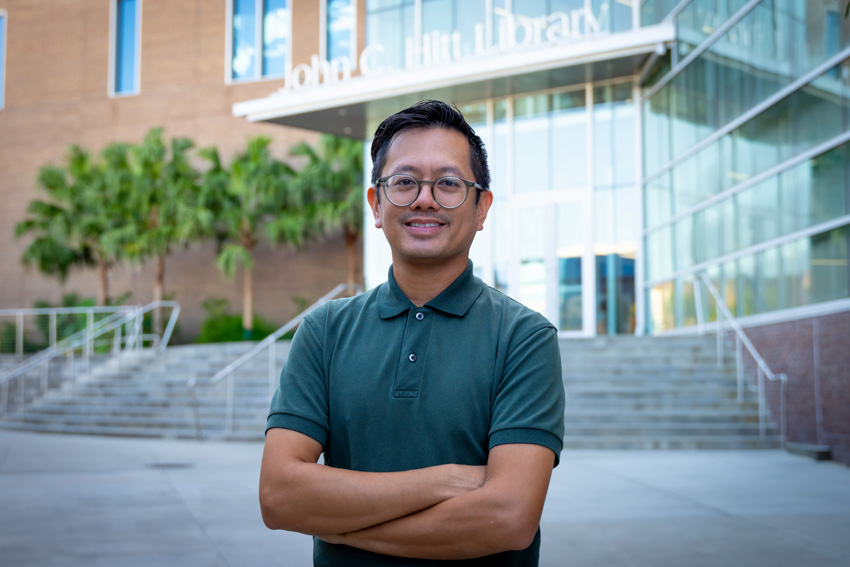7 Questions with Book Conservator, Chris Saclolo!
All Libraries Posted: October 24th, 2024Today we’re celebrating Chris Saclolo! Chris works as the sole Book Conservator in the Special Collections & University Archives department and is responsible for protecting the university’s archives. The first and only individual to hold this position, Chris is pioneering what it means to advocate for, protect, and restore prized archives in our library! Between maintaining a safe environment for the materials, dealing with storage challenges, and rehousing materials, Chris is a master at time management, efficiency, and multi-tasking. He exemplifies what it means to approach your work every day with a sense of detail, pride, and creativity. We sat down with Chris to learn a little bit about book conservation, his background, and the importance of treating our materials with care!
Tell us a little bit about your background and how long you’ve been with us at the UCF Libraries.
Back when I was an undergraduate student at UCF, I enrolled in Book Binding ART3170C, which is one of the most popular classes in SVAD. I enrolled in the class on a whim and fell in love with book construction. After I graduated from UCF, I received a fellowship at Columbia College Chicago where I received my Master of Fine Arts in Interdisciplinary Book & Paper. I’ve been at the UCF Libraries since December 2014.
How does your background as a UCF alumni influence your approach to book conservation and your role in the university’s library?
As a UCF alumnus, having worked at Special Collections & University Archives as a student assistant, I had the opportunity to establish a working conservation guide in the department. I had help from both Larry Cooper, who was my professor in Book Binding, and April Anderson who was the Senior Archivist for UCF Special Collections at the time, to support book repair practices by setting up space in the department and acquiring specialized tools and equipment for book repair which some I still use to this day. Under their guidance, I started basic book repairs, such as mending tears on old books and fixing loose book covers. Slowly, I came across other books that needed more extensive repairs, like rebinding. Several years later, I returned from graduate school, gaining more knowledge of historical bookbinding structures. I was able to fill the role of Book Conservator that had been created at Special Collections & University Archives because of their need for physical collection care.

As the first and only Book Conservator in the department, what were some of the initial challenges you faced in establishing this role?
One of the challenges I faced earlier was the need for more workspace. While starting, I worked in the reading room, where visitors could observe the repair work up close. While this allowed people to see firsthand the careful work of book repair, the reading room became too crowded. Eventually, I moved to a designated space for conservation work in the staff area on the first floor. Along with performing book repairs in a quiet setting, I can now fabricate large custom enclosures for oversized items in my workspace.
Can you describe a typical day in your role as Book Conservator? How do you balance the various responsibilities you have?
A typical day as a book conservator varies from day to day. I work on book repairs, creating new housing enclosures for recently acquired books and artifacts, or providing reference at the Special Collections desk. Every month, I record data logging readings of our storage environment to ensure our collections are well preserved. Along with my daily conservation duties, I also handle condition reporting on our artwork collection, which we also loan to local institutions like the Polasek Museum exhibit “Natural Florida: Art by Emma Sears Marsh & Joy Postle” in which I worked with their curator. The exhibit is currently open until December 1, 2024 and you can find more information on the museum website.

Can you describe how you engage with students in your role?
I deliver presentations to multiple classes that frequently use our Book Arts & Typography collection. I speak to students about historical and contemporary bookbinding structures every semester. By teaching various book structures in class visits, I can perform repair work on books from different eras and regions.
How do you stay updated with the latest techniques and advancements in book conservation?
I stay updated with the latest techniques and advancements in book conservation by being proactive in the community. Reading the latest research and news from the American Institute for Conservation of Art and Artifacts is very helpful in my work. I consult with other conservators throughout the country on their experiences for alternative solutions to repair work if necessary. Currently, I am a member of the Guild of Bookworkers, which is a professional group of book conservators and bookmakers who have many years of experience in the book conservation and book-making field. Attending conferences and workshops in conservation also allows me to stay current. I had the fortunate opportunity to attend the Paper and Book Intensive workshop this past summer on a work-study scholarship, where I learned new techniques in book construction while updating my bench skills in some historical book structures.
Tell us a little about you outside of the Library. What sort of interests and hobbies do you have?
Outside the library, I like to play tennis. I’ve been playing tennis regularly for two years now. I also started to run a lot. I started running at the end of last year and since then I’ve run a total of 8 races. My next run will be here at UCF for the U Can Finish 5 Mile Race in October.


Chris rocks!